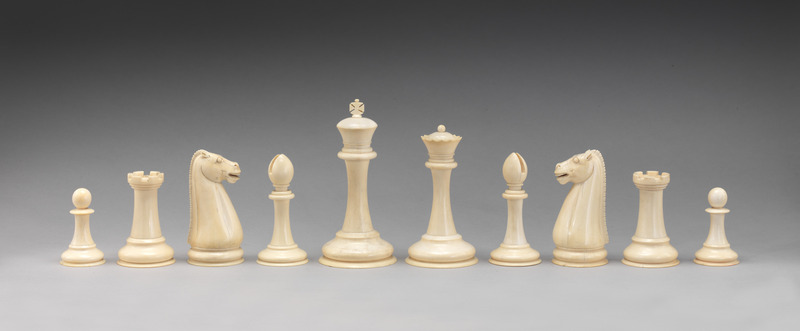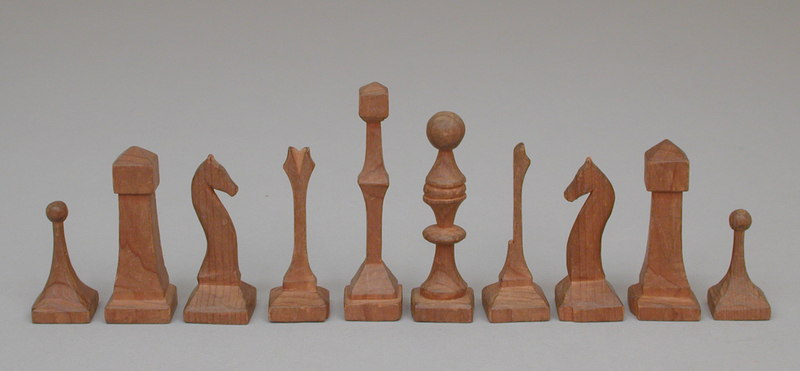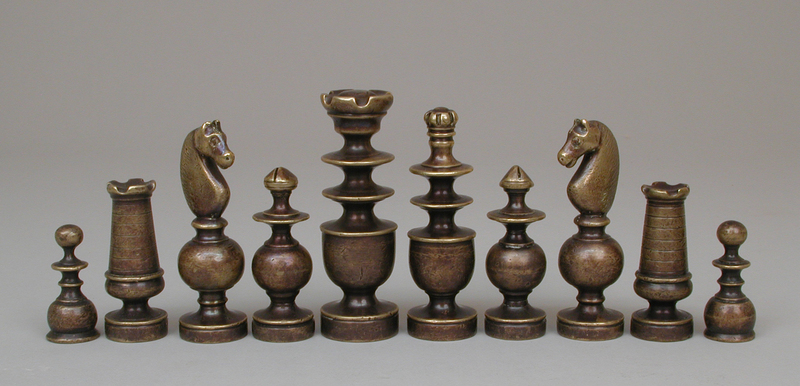Materials
Chess pieces have been composed of virtually every commonly- and uncommonly-worked material available to chess-playing cultures. Chess artifacts from various time periods and distant societies most commonly include the ivory and bones of animals, the wood of many tree species, and metals such as bronze and silver. Chessmen have also been fashioned out of historically distinct pottery compounds such as stonepastes and jasperware. These materials may have been chosen based on ease of access, manufacturing knowledge, or for their value and uniquity. The trading and cultural networks of the ancient world allowed for a chessman to travel great distances, whether finished or unfinished, and for the final artifact to be found far from its material place of origin.
With such varying materials come widely varying methods. Chessmen of wood and ivory were carved first by hand, then by increasingly precise and mechanical methods. Metal chessmen were carefully molded and polished. Mineral chessmen, such as pottery artifacts or carvings of stones and gems, were the product of specific artisan methods of their time. All of these production methods used, from the most direct to the most intricate, represent the historical knowledge of the technological and artistic cultures producing them.
Chess pieces, much like textual artifacts and other forms of artisanship, are the products of complex material and technical networks. Chessmen require a material support that a society is capable of obtaining, crafting, imparting meaning on, and using practically. They also require a social construct based on human communication, with broadly-understood conventions, in order to be used correctly and preserve their meaning. Thus, each chessman’s physical artifact imparts a material history of the people and societies that produced them, as well as an intellectual and artistic history of those who used and understood them.



